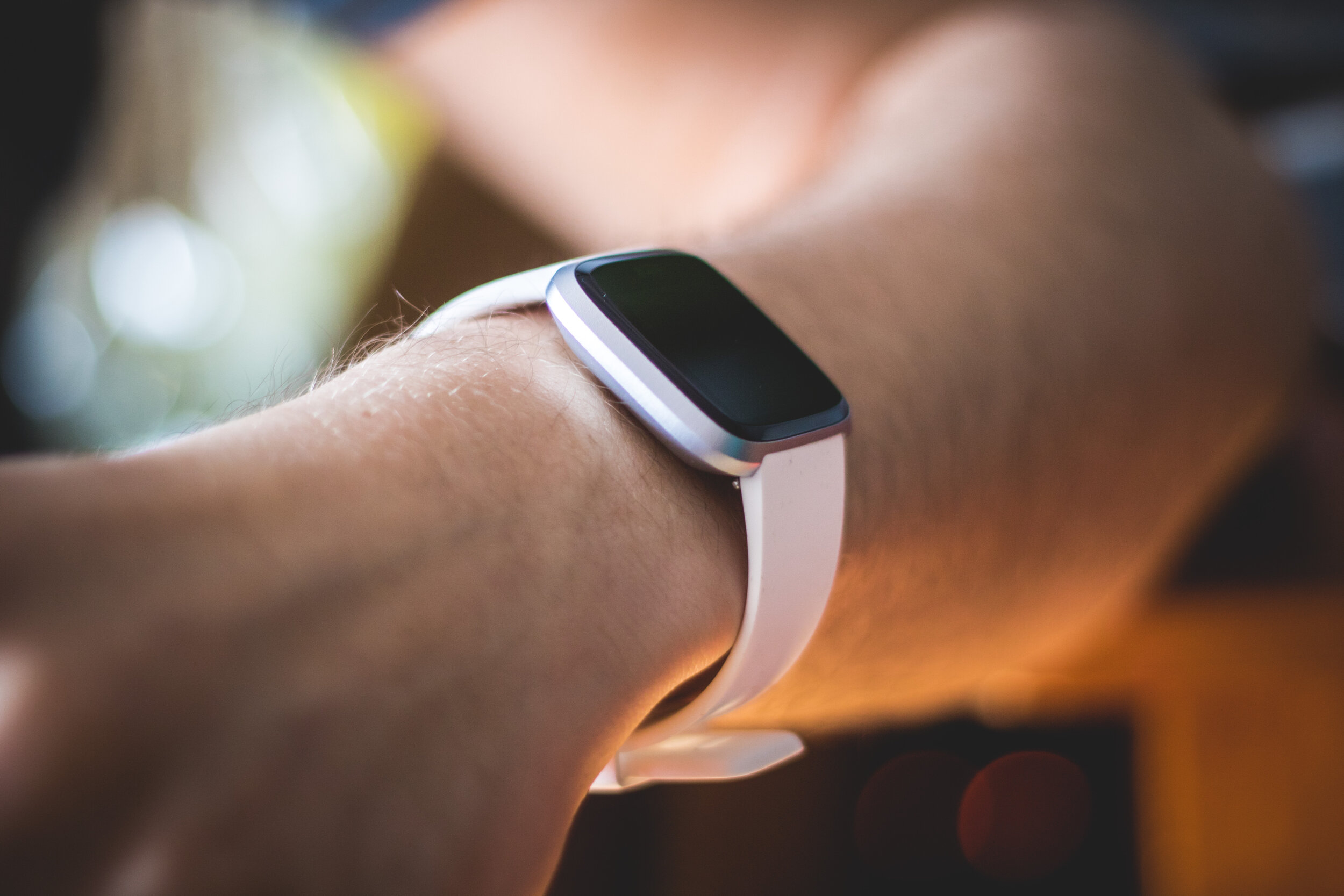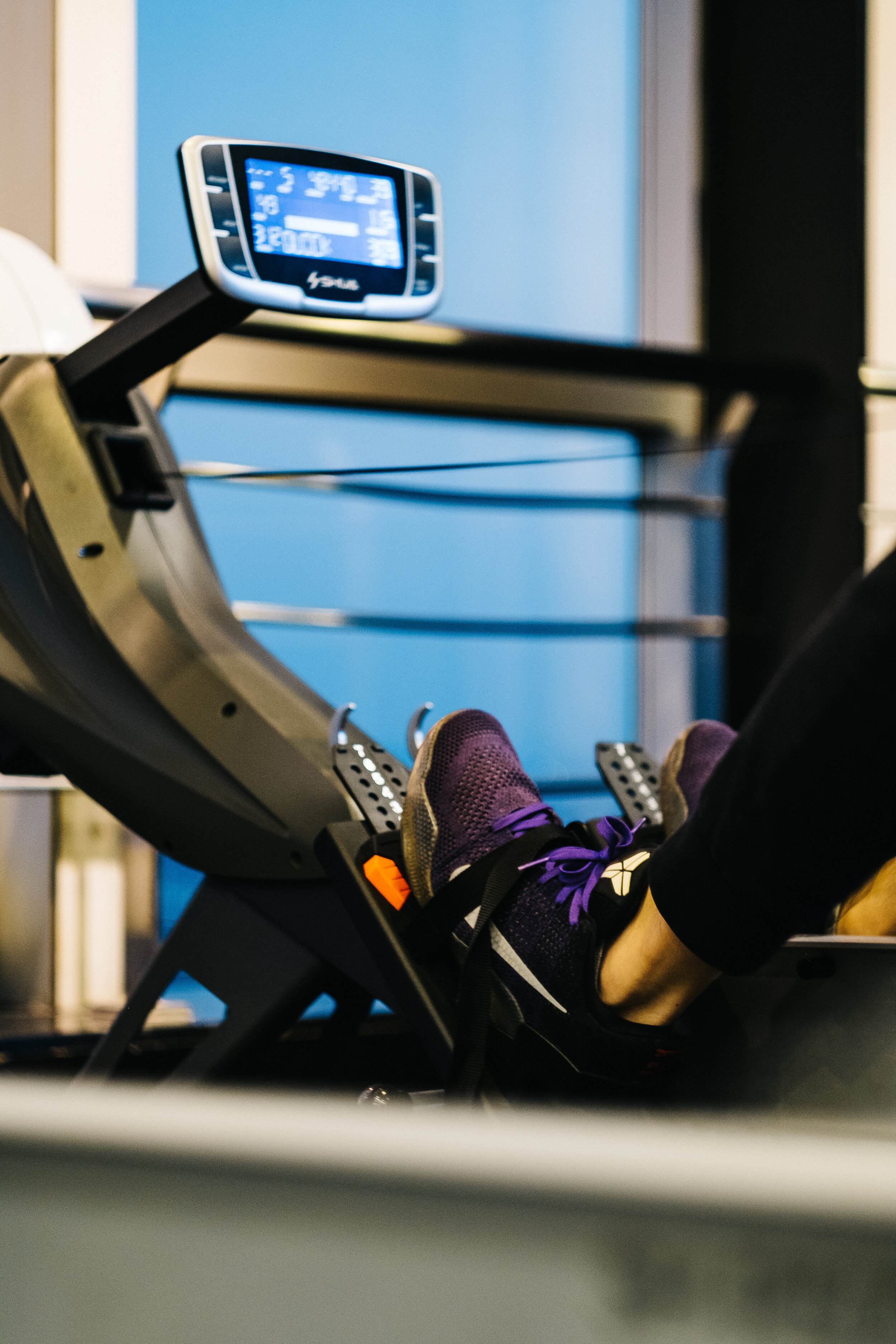Determine Exercise Intensity by Using Your Heart Rate
Determine Exercise Intensity by Using Your Heart Rate
Now that most all fitness wearables come standard with heart rate technology, we have the ability to really work at the intensity we need to for specific goals. The rudimentary line graphs on old treadmills were never good in the first place and are now obsolete. All they did was display that as you get older, you don’t need to achieve as high a heart rate for positive benefits. Yeah, yeah, we get it.
Before I go on, it’s important to understand some surface level physiology with regards to heart rate and outcomes. There are several accepted and used classifications by professionals, but here’s the skinny:
A lower intensity (50–65% of max heart rate) is associated with fat loss because at this intensity your body primarily uses stored fat as a fuel source. Nothing is all or nothing (great sentence, huh). Your body will still use carbohydrates at this intensity, but, much more of the energy is coming from your past food vices and many Thanksgivings come and gone.
A moderate intensity (65–80% of max heart rate) is associated with cardiorespiratory fitness and utilizes primarily carbohydrates as a fuel source. Again, fat is being used, but to a lesser extent. This is why the answer to the common exercise science test question, “what nutrient is the body’s primary fuel source during intense exercise”, is carbohydrate.
A high intensity (greater than 80% of max heart rate) uses an even greater percentage of carbohydrate as well as some sciency cellular level rapid-energy-repletion that’s beyond the scope of this post. Heart rates this high are not meant (er, able) to be sustained for long. Think about short bursts of activity where you’re sucking wind if it does much longer than 15–30 seconds.
For most people looking to get in shape, live longer, and look better naked, the focus should be on the lower and moderate intensity ranges.
Articles always try and state one is better than the other, but in reality, both are good for different reasons as we’ve just learned. Moderate/high intensity is a quicker workout, but it can be tough on the joints and take more mental drive than you’re able to conjure up some days. The low intensity takes longer, but it can be maintained without exhaustion for a long damn time. You can set it and forget and dive into a good book or television program while you go to town. Clearly, both have their ups and downs, which is why I suggest alternating the two for well-rounded fitness.
I know what you’re thinking. “Alright, Ben. Get to your point. I already could have looked at 138 Instagram posts by now.”
YES. OK. Time for the practical application…
Target Heart Rate is what we’re about to find.... This should be a pre-determined target range that you work in throughout a session to KNOW you’re getting the benefit you want.
For purpose of an example, let’s say you want to maximize fat loss, don’t particularly enjoy cardio, but have a treadmill in your living room and are currently binging OZARK Season 3 on Netflix. Furthermore, you have all the time in the world because the country is on lockdown and you couldn’t go anywhere if you wanted to. We also have to say you’re 29 because apparently people love their 20s and in this scenario you’re not 30 yet. The basic formula for target heart rate is 220 - your age, multiplied by the intensity you’re trying to achieve.
220 - 29 = 191 x 60% (low intensity) = 115 bpm
I grabbed 60% at random from the (50–65%) low intensity range. Know that 5% changes equate to about 10 bpm difference, so, we’ll make our range 105 to 125 bpm since we’re not getting too obsessed with the numbers.
Our target heart rate range is 105–125 beats per minute
If you do have a fitness wearable that displays heart rate, great, but if not you’ll have to do it the old school way. Cardio equipment that doesn’t sound like a helicopter taking off probably has accurate enough heart rate sensors, so you can hold those for 30 to 60 seconds and use that number (just don’t use your thumbs as the thumb has its own detectable pulse. Cool, right!?).
What I prefer over everything –and what you should have in your ability tooI kit– is the even older school way of finding your own pulse. Here's how:
Palpate (place fingers lightly) over your carotid artery -beneath the natural jaw angle. You can count the beats you feel for 30 seconds and multiply the number by two OR count for 15 seconds and multiply by 4. This shouldn’t be hard to find if you’re already exercising. If you can’t find it… keep looking.
Note that it takes about 3 minutes for the body to achieve a steady heart rate, so wait at least 3 minutes before you feel it out. If it's lower than 105, you know you need to increase the difficulty of the exercise slightly. If it's higher than 125, you need to cut back on intensity slightly. It should only take minor adjustments. Once you're in that range, you'll start timing your workout. If you’re on a cardio machine that has controlled speed and elevation like treadmill or elliptical, you simply make an adjustment in those controls. If you’re running, playing tennis, or something else variable, just slow your role a bit. If you’re playing mini-golf, you probably need to go to the hospital or take it less seriously.
The first time you do all this is some trial-and-error, but once you got it down, you’ll remember better for next time and start learning your body better. If you routinely use the same cardio equipment, you can adjust your settings right away and let your mind drift away.
Determining exercise intensity by using your heart rate is a great way to take the guess work out of cardio sessions and to ensure they're the right kind of productive.
If we’re training together online, I will calculate all of this for you and prescribe exercise intensity according to your goals and other circumstances that could affect heart rate, i.e., medication, caffeine intake, stress level, recovery ability, number of children currently in the house, the episode of OZARK you are on, etc.
At any rate, I’ll talk to you later!
// Ben


